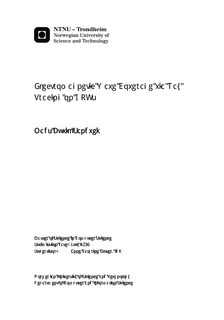Electromagnetic Wave Coverage via Ray Tracing on GPUs
Master thesis
Permanent lenke
http://hdl.handle.net/11250/2352218Utgivelsesdato
2014Metadata
Vis full innførselSamlinger
Sammendrag
With the appearance of libraries suchas NVIDIA's CUDA programming environment and and NIDIA's OptiX ray tracing framework,we can make use of the processing power of modern GPUs toperform compute-intensive simulations.
Simulation of electromagnetic waves such as radio waves based on a physically accurate model of propagation,using the method known as ray tracing, is theoretically capable of producing far morerealistic coverage maps than those produced by traditional methods such as Longley-Rice which isbased on statistics. However, using the ray tracing approach causes the computationalcost of the simulation to become enormous, and performing a full simulation on the CPUalone could take hours, if not days.
This thesis gives an overview of the technique of ray tracing and theory surroundingthe propagation of electromagnetic waves. We then use this to build a radio wavesimulation application which performs all simulation on the GPU. Each wave is reflectedand refracted based on dielectric properties of the medium(s), although the exact valuesused might not precisely correspond to the precise dielectric properties of any actualterrains, and interference caused by differences in phase is accurately accounted for.Finally, upon intersection with terrain or receiver, the signal strength isstored in a buffer mapped onto the terrain which can then be visualized.
In conclusion, the thesis argues that the results obtained show promise for greatimprovements on signal coverage calculation. No explicit comparison between Longley-Riceand the presented method is made, as no expectancy is made that the method hasincorporated enough detail about radio wave propagation and enviornmental effects forthe simulation to compare. The thesis instead hopes to show the potential in generatingcoverage maps by means of ray tracing\ldots
